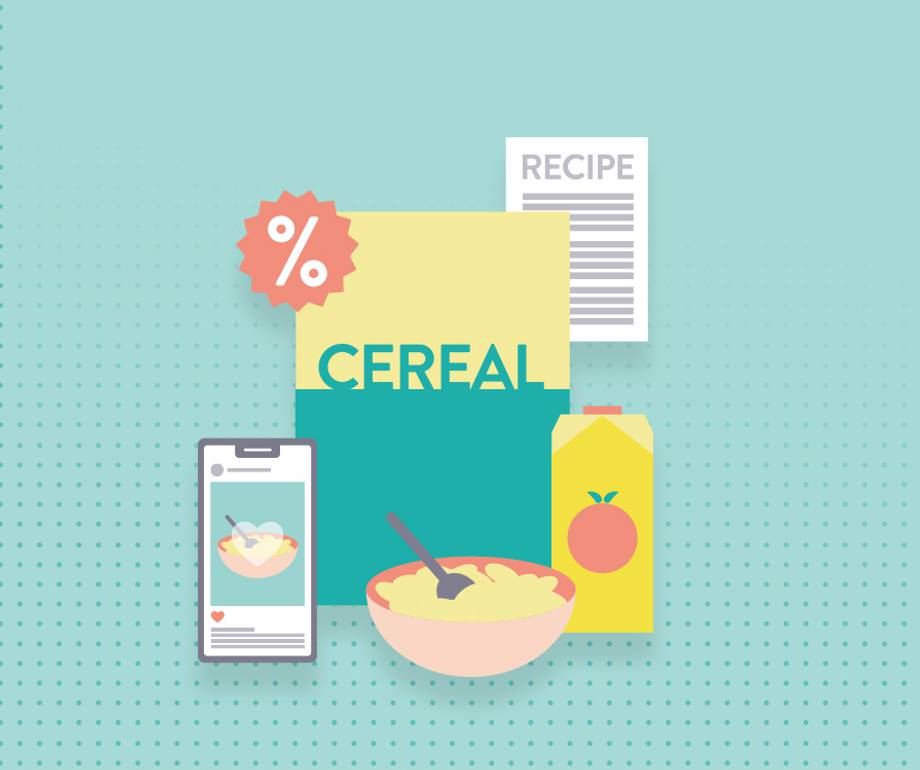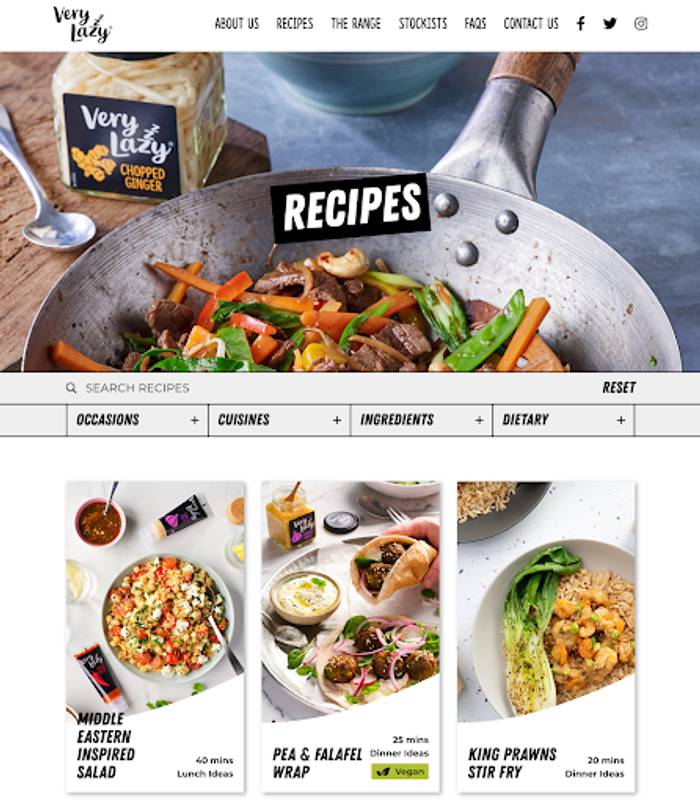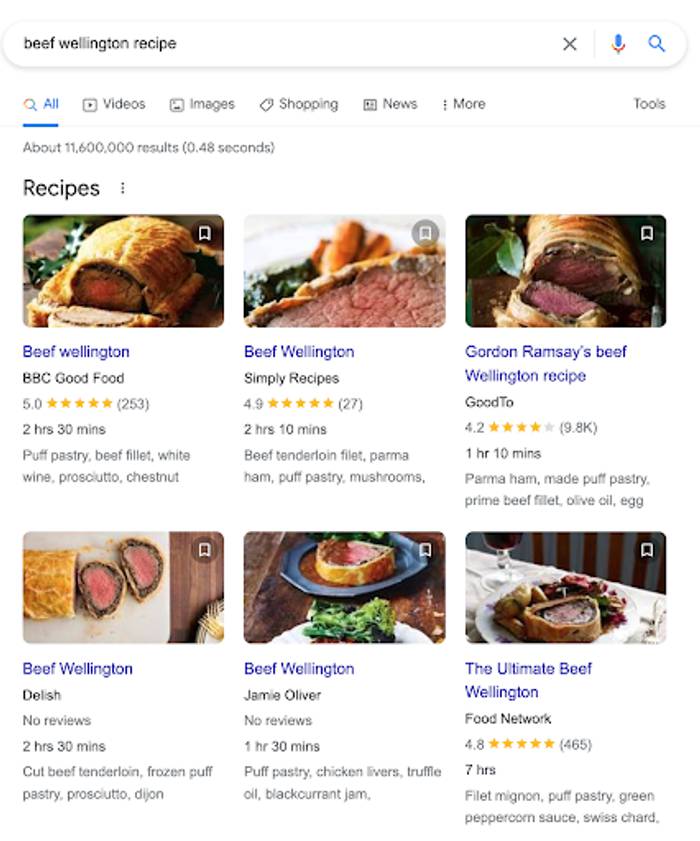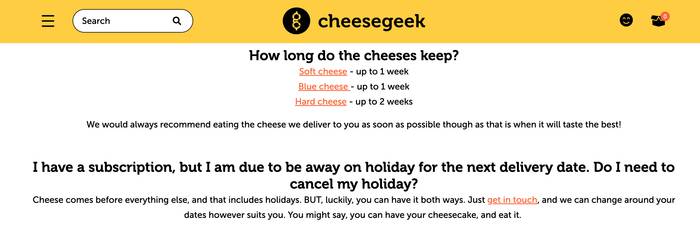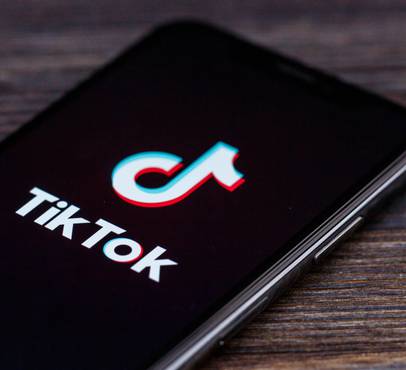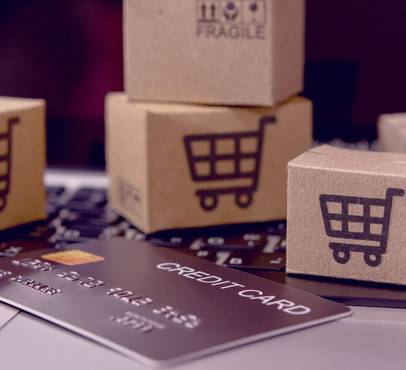In the UK, food and beverage output is set to grow by more than 3% in 2022. This continues the industry growth we first saw in the later stages of the pandemic, where there was a 47% increase in new food and drink start-ups, as people on furlough started their own ventures and brought a wealth of tasty new products to market.
Today, supply chain challenges, increasing costs and labour shortages have all played a part in increasing the UK's food and beverage prices. Combined with the current cost of living crisis, which is set to worsen over coming months, now more than ever customers may need a little more persuading to part with their cash.
Innovation and creativity lie at the heart of the food and beverage industry — from recipe development to package design — standing out from the competition in such a saturated market is key. Naturally, this applies to marketing too.
Inspired by the ‘messy hexagon’ — our reimagined version of the traditional sales funnel — we’re serving up a carefully-curated list of 20 digital marketing top tips for maximising awareness, engagement and conversions.
Raising awareness
Getting your food or drink brand’s name out there, and positioning your product offering in front of potential customers is key for building that relationship with them, which helps keep you at the forefront of their minds when looking to make a purchase.
There are a variety of ways you can get your name and products out there, one of them is through paid advertising.
1. Make use of a variety of paid campaign formats
Although paid search can be a highly effective way for your ads to appear to prospective customers, it somewhat limits the available audience to those users who are actively searching for your product.
Mixed media campaign forms such as Google Ads' new Performance Max Campaigns allow you to reach your target audience with mouthwatering creatives across a range of Google properties, such as YouTube and the Display Network, rather than waiting for them to come to you.
2. Use ad text to highlight your brand's personality
Search ads don't have to be dry! These ads provide a snapshot into your business, so ensure that your brand's personality and tone of voice shine through. You only get one first impression, so make it a memorable one!
3. Enhance your core products
If you have an e-commerce element to your food and drink business, a Google Shopping campaign might be worth exploring; but be selective! Google Shopping ads may not work for every product in your catalogue. Focus on where you can:
Be price competitive - Google Shopping is essentially a price comparison site. If you sell the same product as another business and they have it on sale for much cheaper, perhaps steer clear of pushing it too heavily.
Bring something different to the table (pun intended) - for example any exclusive bundles or gift sets are worth highlighting
Be profitable! There's no point advertising small value products on Google Shopping if the cost per click is going to significantly eat into your profit. Focus on multipacks or mid-high value items
4. Got a physical location? Use paid ads to drive footfall
Google Ads isn't just about the digital conversions you know! If you have a bricks-and-mortar location, to increase bookings or footfall, consider testing a 'Local Campaign'.
These campaigns help you to highlight your business’ location to users who are in the local area or searching for other similar businesses nearby, giving them key business information. We can measure these campaigns using Google Ads' revolutionary 'store visits' conversion action. Clever, huh?
As well as paid advertising, you can also shine a spotlight on your brand and product range by using both traditional and digital PR.
5. Generate buzz around your brand with press releases for new products, recipes or exclusive insights
There are a range of both print and digital publications where readers love to read about the latest product launches, gather recipe inspiration and hear from the development chefs responsible for the delicious flavours of new and existing products.
As such, a PR strategy is key for building your reputation within the sector amongst existing and potential customers.
You could also use enticing and insightful data to create engaging hooks for digital PR campaigns, raising awareness of your brand and the experts behind it. Whether you try newsjacking a potential trending story by offering commentary – such as on the impact of a shortage of sunflower oil – or use insight-led data gathered in-house, there are lots of ways you can creatively get your brand’s name, its products and your experts out there!
Educating customers
What is it you offer? How do you differ from other brands? Why should customers convert with your food or drink brand? There are a wealth of tactics (across a variety of formats) for enlightening existing and potential customers.
6. Use blog posts to educate customers
With seemingly endless topics at your disposal when it comes to food and drink, content creation has to play a fundamental role in your marketing strategy, but blog content alone might not be enough to cut the mustard.
You could go one step further and create a content hub; a series of web pages that address the needs of the target audience at each step of their journey. They’re usually focused on one central topic that guides users through relevant information with a clearly defined structure.
For example, if you’re a spirits brand, you could create content under different themes, such as vodka cocktails, rum cocktails and so on. For food brands, you may consider a series of recipes to suit different cooking abilities and dietary needs; from gluten and dairy free, to vegetarian and vegan recipes, as well as quick and easy dishes that can be made in twenty minutes or less.
Connecting your pages in this way can help to build semantic relationships between pages and improve topic authority. This means you’re more likely to be seen as an authority on your chosen subject. Unlike blog content that gets buried deeper and deeper into the site overtime a content hub helps surface important content to the top of the site.
7. Use recipe structured data to improve Google rankings
Structured data provides clues about the meaning of a page to search engines, helping sites like Google better understand the content you’ve written. Google uses structured data to display search features and enhanced results, making your search results more enticing to click on by hungry searchers on the hunt for a tasty recipe.
The Search Engine Results Pages (SERPs) for recipes are highly competitive, with brands and chefs alike battling for the attention of readers. By applying recipe structured data to your recipe pages gives you the edge as users can discover more information about the recipe such as ingredients, method, prep and cooking time, calories, and so on. Featuring your products in the recipes you write is a sure-fire way to encourage readers to purchase your product when cooking the dish, especially when positioned as a key ingredient to the recipe’s overall flavour. Get in touch with our Technical team who will be able to advise you on making your recipes the best they can be digitally.
8. Invest time into your creative content
To further inform and educate potential customers, you should spend time creating inspirational content with ‘How To’ recipe videos and step-by-step carousel guides.
Whether it be for breakfast, lunch or dinner, as a snack on the go, in a picnic or for a dinner party – show the versatility of your products to maximise the number of potential customers who want to purchase it and create something delicious. You’ve got a great opportunity to get creative with your content, tying it in with seasonality as well as popular trends – we all remember the viral feta pasta TikTok recipe that had supermarket cheese shelves running bare!
You should also look to incorporate customer content into your own. Has someone suggested a recipe? Make it! Are potential customers asking what it tastes like? Have an influencer or member of your team eat or drink it on camera, and give a review of the smells, tates and textures. Has a customer made a video of them buying your product? Duet them and show your reaction. Proactively including customers in your marketing will help to educate others on your product using authentic people, helping to build trust and long-lasting relationships with them.
9. Respond to your customers’ FAQs
Whether you choose to answer your FAQs in blog format, social post response or perhaps in video form, it will go a long way in terms of reassuring customers they’re making the right decision when purchasing your product.
Providing insight and further information on topics you know your customers are asking – such as delivery times, recipe ideas, storage information etc – will help to close that gap between them being interested in your product and making the decision to purchase it.
10. Amplify your content and offers over email
Email marketing still remains a relatively low-cost method for connecting with your audiences multiple times, with tailored offers and bespoke messaging around your latest product launch or delicious recipe arriving directly into their inbox.
In today's world, with the growing importance of zero and first party data, email marketing is a great way to build long-lasting, authentic relationships with customers, while amplifying your marketing efforts such as blog posts and discount campaigns.
Driving engagement
Having a strategy to drive interaction and engagement with your brand not only helps to raise your profile and position you at the forefront of potential customers’ minds when it comes to making a delicious purchase, it also generates a buzz around your brand.
Take for example the viral TikTok foodie trend, Little Moons. Their marketing heavily relied on social media, gathering engagement from millions around the world, all wanting to try the latest flavours. Here’s how you can drive engagement with a variety of audiences.
11. Use a variety of social platforms
Be present on different social channels, each with a different strategy curated specifically for the audiences on there. Tailor your content to each platform accordingly, with unpolished videos working best on TikTok, but high-res curated imagery of food and drink better suited to Pinterest.
12. Create a branded hashtag that your consumers can use
Bring your community and customers together through a branded hashtag where you can see and share how your products are being consumed by those that love you the most. This will help them find you and your brand in the sea of content flooding social media. It also helps you track and monitor the way users are interacting with your brand as well as gathering UGC, which can be used later down the line in your marketing.
13. Use relevant hashtags and keywords in your TikTok content
They’ll help you be discovered by your audience and get your content trending for those phrases. You should also mix up the hashtags you use, from the all-encompassing ones like #foodtok to more relevant ones like #pastalovers or #pastasauce.
Remember, you don't have to wait around to try something new or join in on a trend. Just because your competitors aren't taking part, or they may not even be on the app, it doesn't mean you shouldn't be either - in fact, you should!
Give the viral recipe TikTok trend a try and see how it performs. Then you can encourage users to stitch your video with their recreations, curating your very own bank of UGC.
Speaking of the power of User Generated Content…
14. Use UGC and ‘Founder Stories’ in your Social Ads
Much like when you're entering a large supermarket, often we're overwhelmed with choices on social media. For food and drink brands, using real customer photography and videos in your ads can help showcase your products and how your customers like to enjoy them. People buy into authenticity, and it doesn’t get more authentic than real people genuinely enjoying your products at home or on the go.
For ‘Founder Stories’, you can use your real staff to show how passionate you are about what you do. This will help establish a human connection, as shoppers buy into your brand’s story, making your product more than just about its consumption.
15. Monitor what your competitors are doing in their social ads
Use transparency tools such as Meta's Ad Library and TikTok's Top Ads to take learnings from other relevant food and drink brands. Evaluate what they are (and aren't!) doing and look for opportunities to stand out from the crowd.
Whether it’s jumping on the latest trend, curating slow motion shots of your products, or utilising influencers in the food and drink space, find your own voice on the platforms and your customers will hear you loud and clear.
16. The key is in the creative!
For Paid Social, you have less than three seconds to grab someone's attention. If your branding or packaging is eye-catching, then lean into this. If the focus is the food or drink itself then focus on this through video formats showcasing your product. Take a look at our 10 ways to level up your paid social creative!
Design is a key element when it comes to capturing the attention of and engaging potential customers, whether it be through organic or paid social media activity. Here are some top tips on curating eye-catching content that can stop the scroll, allowing you to not only tell them about your food and drink products, but show them how tasty they really are.
17. Find the best angles for your for photography and video
People love to see delicious food and drink come to life on their screen. Curate your content, whether that be mouthwatering high res images or enticing videos, to suit how your audience consumes their content. If you’ve got a highly decorative lattice pie? Shoot top down/flatlay to showcase all that intricate detail. For a layered fruit smoothie or cake, shoot straight on to unveil each wave of flavour.
18. Make it move
Beautiful food photography is great, but video and animation can tell a bigger story in a smaller space of time. Whether it be zooming in on a dish, or a slow motion pour of a refreshing drink, motion will help to capture more than just the look of the dish, but the feel of it also.
It doesn't always have to be video in the traditional sense. If you've got lots of still images in sequence, you can make it a stop motion clip. Does it pour? Make a cinemagraph. Your potential customers will be eating with their eyes before they buy your product, so you have to put on a show worthy of them stopping their scroll!
19. Collaborate with other brands in the food and drink space
Customers love to see brands pair up with complimentary products for collaborative ranges, competitions and recipe inspiration. It’s a great way to piggyback off of other brands’ followings, as well as generate buzz around a creative new project or prize.
If you’re a snack brand, consider pairing up with a drinks company encouraging customers to enjoy your products together. And vice versa, if you’re a drinks brand, why not consider pairing with a food subscription service, offering your products alongside complementary foodie items?
Now, last but by no means least when it comes to marketing your food or drink business…
20. Measure your results holistically
Try not to hyperfixate on one single element of your marketing mix, it’s all an ecosystem that works together in the messy hexagon.
Each customer will be different; some will go straight from trigger to purchase, while others may take their time to ‘get to know’ your food or drink products. Some may interact with your brand when they don’t need anything, but remember it when they do and purchase at a later date.
While selling your product directly means you have control over your attribution, often food and drink brands flourish by working with third parties such as supermarkets. If you're not in control of your Point of Sale make sure you talk to your partners to find as much data as you can. Whether you're focusing on direct sales, or measuring KPIs like organic search uplift and follower growth, make sure you're measuring your full marketing output to help inform your next steps.
After the magic ingredients for your food and drink marketing strategy?
From leading convenience retailer Nisa Retail to soup brand Glorious! and even Harringtons pet food, our team of digital experts have over 20 years’ experience helping brands and businesses in the F&B industry to stand out online.
Drop us a message if you’re looking to connect with new customers, raise brand awareness and drive sales.
Are you a food or drink brand who needs a hand with your marketing?
Get in touch!Post by

Since forming Extreme’s social media department back in 2012, our Head of Social Donna and her team’s work has been recognised nationally. With extensive experience spanning mutiple sectors, Donna specialises in social strategy, ideation and paid social advertising.
Project
Post by

Our SEO Lead with over 15 years’ experience, James calls on an extensive knowledge of search and works closely with our content team to deliver targeted, results-driven SEO strategies.
Project
Post by

As our dedicated Social Media Designer, you'll find Sally behind either behind a screen or behind the lense capturing the essense of all the brands we work with. As Extreme's star baker, you might also find her in the kitchen cooking and styling dishes to look mouthwateringly delicious. If you ever find yourself drooling on your phone, that's probably one of Sally's creations!
Project
Post by

Lucie is our lead on all paid media activity, overseeing our talented paid media team and managing the strategy and implementation of all paid search campaigns across multiple platforms. Fully Google qualified and working directly at Google prior to joining Extreme, there's not much Lucie doesn't know about PPC!
Project
